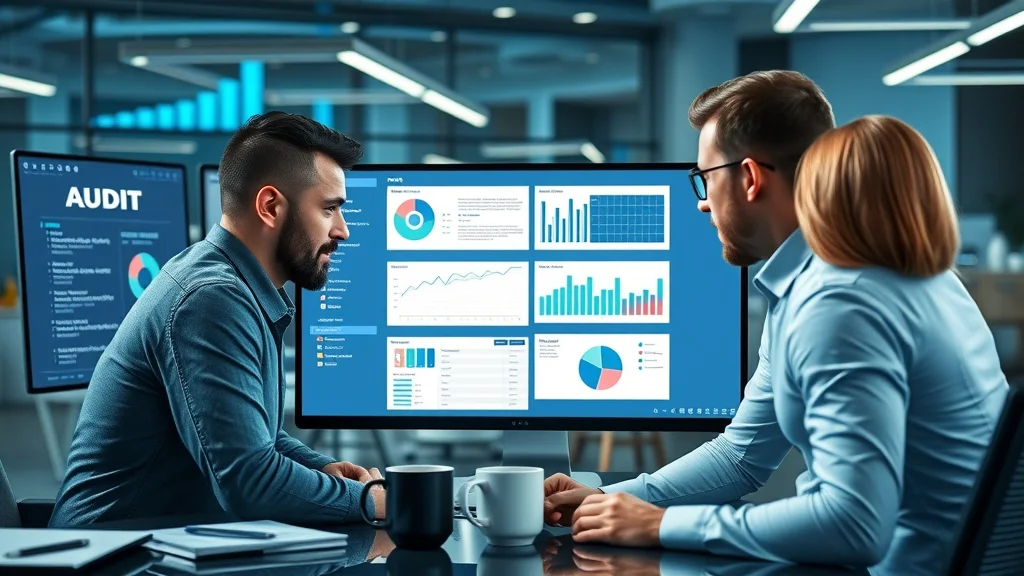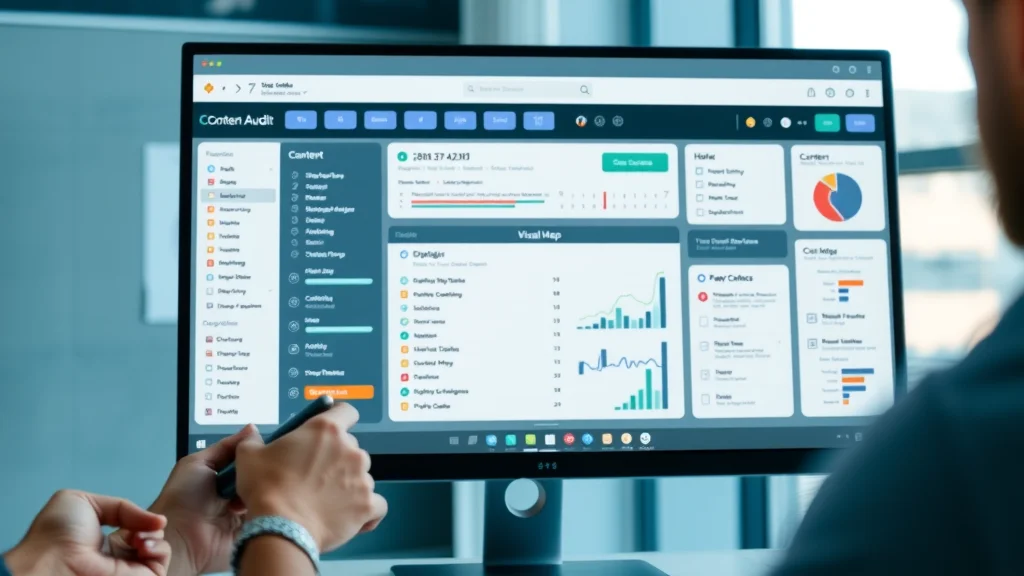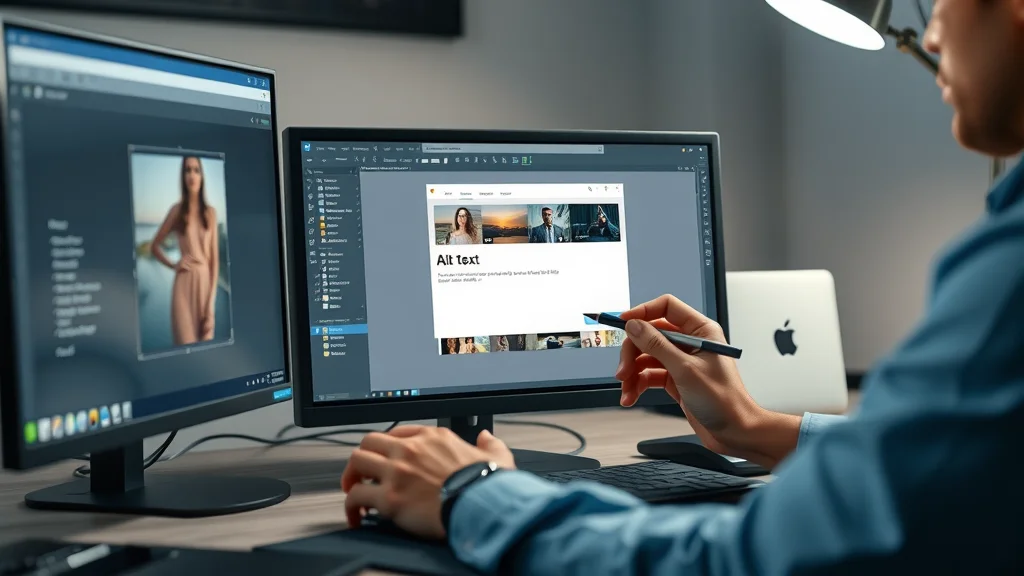Did you know over 60% of websites still have basic on-page SEO issues that suppress their rankings—even in 2025? If your site isn’t optimized, you’re likely missing out on a flood of search engine traffic every single day. The good news: you can fix most on-page SEO problems in less than 24 hours, and the impact on your rankings can be dramatic—sometimes overnight.
Unlocking Rapid On-Page SEO: The 2025 Advantage
On-page SEO remains the fastest lever website owners and digital marketers can pull to boost search engine visibility—especially in 2025, when the competition for organic traffic is fiercer and algorithms are smarter than ever. Acting quickly to fix key page SEO elements like title tags, meta descriptions, alt text, and internal links not only helps you rank higher in search engine results, but also dramatically improves user experience, click-through rates, and conversion potential.
If you’re wondering how to prioritize your on-page SEO strategies for immediate wins, focus on high-impact tasks first: optimize your target keywords, address technical SEO flags, perfect your page content, and shore up your internal links. This approach is based on the proven Pareto Principle—fixing the crucial 20% of page SEO factors that drive 80% of ranking improvements. With a focused, modern SEO workflow, you’ll see measurable traffic gains much faster than chasing backlinks or off-page efforts. Let’s get hands-on and transform your search engine visibility—starting now.

What You'll Learn in This On-Page SEO Guide
- How to conduct a fast and thorough on-page SEO audit
- The top actionable steps to fix on-page SEO issues immediately
- Best practices for title tags, meta descriptions, keyword research, and internal linking
- Techniques to optimize user experience, structured data, and featured snippets
- Real-world insights and mistakes to avoid in 2025
Understanding On-Page SEO: The Basics for 2025
What is On-Page SEO?
On-page SEO, sometimes called “on-site SEO,” is the practice of optimizing elements directly on your web pages to help search engines understand your content and rank it higher in results pages. This includes everything from keyword-rich title tags and meta descriptions to optimized page content, headers, structured data, and internal links. In 2025, the line between content and technical optimization is even blurrier, as search engines like Google increasingly value both relevance and quality user experience.
Ignoring on-page SEO means you risk having your web page buried below competitors—even if your site is technically strong or enjoys lots of backlinks. That’s why rectifying common, fixable on-page SEO issues like duplicating titles, missing alt text, poorly structured content, or broken internal links must be a top priority for anyone seeking to rank higher, attract more organic traffic, and meet evolving search intent.
Why On-Page SEO Still Matters for Search Engines
Search engines continually update their algorithms, but on-page SEO remains foundational to how your web page is discovered, indexed, and prioritized in the engine results page. The process ensures you use the right target keywords, build a logical content structure, serve mobile-friendly pages, and present easy-to-read, high-quality content—factors consistently cited as primary ranking factors.
On-page SEO isn’t just for search engine crawlers; it directly impacts user satisfaction and engagement. Well-optimized headings, concise meta descriptions, and internal linking all serve a dual purpose: helping users find the information they need quickly, while signaling relevance and authority to search engines. No matter how powerful your off-site signals, neglecting on-page SEO will always limit your results.
On-Page vs Off-Page SEO: Know the Critical Differences
The Difference Between Onpage and Offpage SEO
While on-page SEO refers to all optimizations you make directly on your own website, off-page SEO encompasses actions taken outside of your site to improve search engine rankings—such as building backlinks, earning brand mentions, and managing social signals. Both are essential for robust SEO, but their strategies and execution differ sharply.
On-page SEO is within your direct control and can often yield faster results. It includes optimizing your keywords, images (with descriptive alt text), internal linking structure, and meta descriptions—all critical for helping individual web pages rank higher for targeted queries. In contrast, off-page SEO takes more time and involves building trust and authority through third-party endorsements, which search engines use as signals of your site’s credibility in the broader ecosystem.
| On-Page SEO | Off-Page SEO |
|---|---|
| Title tags, meta descriptions, headings (H1-H6) | Backlinks from authoritative sites |
| High-quality, keyword-optimized content | Brand mentions and reputation |
| Image optimization with alt text | Social sharing and engagement |
| Internal linking structure | Guest posting, influencer outreach |
| Mobile friendliness, site speed, UX/UI | Online reviews and citations (Local SEO) |

Master the Four Types of SEO for Complete Visibility
To truly dominate the search engine results pages and drive ongoing organic traffic, you need a balanced focus on all four core types of SEO in 2025. Focusing solely on on-page SEO is rarely enough; for comprehensive site optimization, incorporate technical excellence, authoritative off-site signals, and hyper-relevance for local searches where applicable.
Let’s break down the four fundamental pillars of SEO—exploring what makes each unique and why on-page SEO remains at their core. From technical SEO that keeps your site healthy, to robust page SEO that aligns with search intent, and on to off-page and local signals that boost your authority, use each area in tandem to outpace the competition and appear for valuable search queries.
Technical SEO
Technical SEO refers to site-wide factors impacting crawlability and performance, such as fast page load times, mobile responsiveness, sitemap accuracy, structured data implementation, and resolving broken page errors. Think of it as laying the groundwork for all other types of SEO—you can’t rank higher if search engines can’t properly access, index, or interpret your web pages.
On-Page SEO
This is the heart of content optimization: targeting the right keywords, creating unique and compelling page content, perfecting your meta tags, embedding internal links, and ensuring images have relevant alt text. These page SEO tactics help you satisfy search engine algorithms and serve users the information they are searching for, thereby meeting their search intent and keeping your rankings buoyant.
Off-Page SEO
Off-page SEO strategies, like acquiring backlinks and social proof, signal to search engines that your website is a trusted authority within its niche. This component influences domain authority and long-term ranking stability, but without solid on-page foundations, even the very best backlink campaigns won’t help under-optimized web pages rank higher.
Local SEO
Local SEO is essential for businesses targeting customers in specific geographic regions. This includes optimizing your Google Business Profile, gathering positive local reviews, ensuring NAP (name, address, phone) consistency, and enhancing local signals within your on-page content so you show up in maps and local search engine results.
- Technical SEO
- On-Page SEO
- Off-Page SEO
- Local SEO

The 80/20 Rule for On-Page SEO: Focus on What Works
Savvy SEO professionals know the secret to rapid optimization isn’t fixing everything at once—it’s focusing on key areas that generate outsize impact. The Pareto Principle, or 80/20 rule, shows that the majority of your organic traffic and search engine improvements will come from solving a small set of high-impact on-page issues: title tags, page content, meta descriptions, and internal links.
By targeting these vital ranking factors first, you’ll see meaningful gains in both results page performance and user experience. Don’t spread your efforts too thin—hone in on the page SEO optimizations that bring the highest return. This approach not only lets you fix issues rapidly, but also future-proofs your site in the ever-shifting world of search engines.
Applying the Pareto Principle to On-Page SEO
Applying the 80/20 rule isn’t just theoretical; it’s a practical shortcut for getting more done in less time. Instead of auditing every tiny detail right away, identify and fix the most common, impactful problems across your site—like missing target keywords in title tags, poorly written meta descriptions, unoptimized images without alt text, or broken internal links. As you address these core on-page SEO issues, you’ll witness significant ranking and organic traffic growth, leveraging your time and resources most effectively.
"The greatest gains in search engine optimization often come from addressing a handful of core on-page SEO issues." - SEO Specialist, 2025

Step-by-Step On-Page SEO Audit: Find Issues Fast
A structured on-page SEO audit is the fastest way to surface problems sabotaging your rankings. This process ensures every crucial SEO element—title tags, meta descriptions, alt text, structured data, internal links, and keyword placement—is fully optimized. Skip the guesswork; an audit tells you exactly what to improve within hours, not days.
Use the following checklist as your blueprint to run an actionable, comprehensive on-page SEO analysis that will help your pages rank higher fast.
Run a Complete On-Page SEO Analysis
- Review page SEO elements: title tags, meta descriptions, keywords
- Crawl site for missing alt text and image optimizations
- Check internal links and structured data
- Identify keyword cannibalization and overlapping page content
- Monitor user experience, page speed, and mobile-friendliness
| Audit Item | Quick Check | Common Issue |
|---|---|---|
| Title Tags | Includes target keyword, unique, under 60 chars | Missing keyword or duplicates |
| Meta Descriptions | Persuasive, contains keyword, under 155 chars | Missing or poorly written |
| Header Structure | Logical H1-H3 hierarchy | Skipped headers or non-descriptive |
| Image Alt Text | Relevant, descriptive, uses keywords | No or generic alt attributes |
| Internal Links | Anchor text optimized, no orphan pages | Poor or missing links |
| Structured Data | Schema markup implemented | Missing or invalid schema |
| Mobile-Friendliness | Responsive/fast on all devices | Non-responsive design or slow loads |

Walkthrough – How to use free tools for a quick on-page SEO audit
Optimizing Title Tags for Better On-Page SEO
Crafting Impactful Title Tags
A title tag is the first thing both users and search engines read about your web page. Optimizing this small snippet can result in immediate jumps in search rankings and organic traffic. Always include your target keyword near the start, keep your titles concise (50-60 characters), and make each one unique and relevant to the page content. Using action words and addressing search intent will further increase your click-through rate from search engine results.
Crafting the perfect title tag means understanding what your intended audience is searching for—and reflecting that in your wording. Don’t just stuff the keyword in; instead, weave it naturally while communicating value. Remember, your title tag isn’t just for search engines; it’s also your first and strongest chance to convince users to visit your site.
Title Tag Mistakes to Avoid
- Missing target keyword
- Overstuffing with keywords
- Duplicating page titles across the website
These mistakes can frustrate both users and search engines, resulting in reduced rankings and lost organic traffic. By carefully monitoring your title tags and correcting errors, you can immediately boost the effectiveness of your on-page SEO strategy.
How to Write Meta Descriptions that Boost Clicks and On-Page SEO
Best Practices for Meta Descriptions
- Keep meta descriptions concise and persuasive
- Include target keyword for on-page SEO
- Align descriptions with page content and search intent
The meta description is your second shot at winning clicks from the search engine results page (SERP). Strong meta descriptions summarize your content in 150–160 characters, feature the main keyword, and include a compelling call-to-action that addresses the user’s search intent. Make each description unique and match it to the content on the respective web page—cookie-cutter meta descriptions across your site can actually hurt your SEO performance.
"The right meta descriptions can drastically increase your click-through rates in search engine results."

Improve On-Page SEO with Targeted Keyword Research
Keyword research remains the backbone of modern on-page SEO. Identifying the right target keywords helps your pages align with actual search intent and rank higher in search engine results. Don’t rely purely on guesswork—use keyword research tools to discover high-traffic, low-competition keywords relevant to your audience.
Beyond primary target keywords, include secondary and long-tail search phrases throughout your page content to add topic depth, answer varied user queries, and support your authority in the niche. Just as importantly, avoid keyword cannibalization by ensuring each web page targets a distinct primary keyword, preventing them from competing against each other in the results page.
How to Find the Right Target Keywords
Start by using keyword tools like Ahrefs, SEMrush, or Google Keyword Planner to research popular search terms in your field. Analyze both their search volume and competition—aim to balance high search intent and attainable ranking difficulty. Map each keyword to a specific page and ensure your titles, headers, and meta data reflect that target keyword prominently.
Placing Keywords for Maximum Relevance
- Incorporate target keywords in title tags, headings, and first 100 words
- Use secondary keywords for topic depth
- Avoid keyword cannibalization across similar page content
Strategic keyword placement signals relevance to both search engines and users. Naturally work your target keyword into the most visible and significant areas—including opening paragraphs, H2/H3 headers, and within the meta description. Sprinkle in related and secondary keywords, but avoid overstuffing, which can backfire in 2025’s more nuanced search algorithms.

Optimizing Page Content for User Experience and Search Engines
Winning in modern SEO means balancing outstanding user experience with search engine needs. Well-structured, readable page content tells search engines your page is high-quality and relevant, while making it easy for users to find and digest the information they need. When in doubt, optimize for people first—search engines will follow.
Your page content should have a logical hierarchy using H1, H2, and H3 tags, with short, information-heavy paragraphs, bullet lists, supportive images, and descriptive alt text for accessibility. Visual engagement, such as tables and images, keeps visitors on the page, reducing bounce rates and signaling quality content to search engines.
Content Structure: H1, H2, and H3 Optimization
The visual and structural hierarchy of your content matters—use a single H1 for the main topic, descriptive H2s for subtopics, and H3s for supporting details. This approach improves both user experience and search engine crawling. Clean structure leads to rich, featured snippet opportunities, especially when you align headers with possible conversational search queries.
SEO-Friendly Formatting & Readability
- Use short paragraphs and bullet lists
- Make content visually engaging with images and tables
- Optimize images with descriptive alt text
Readable, mobile-friendly formatting helps visitors find answers quickly while meeting search engine standards for page quality. Visually rich, well-structured page content can increase time-on-site and the likelihood of your page surfacing as a featured snippet in search results.
Leveraging Internal Links: The Secret to On-Page SEO Success
Internal linking remains one of the most underutilized yet effective on-page SEO tactics. Properly structured internal links provide clear navigation cues for users and help distribute page authority across your site—ensuring high-priority pages can rank higher in search engine results. They also assist crawlers in discovering all important web pages, preventing content from becoming isolated or overlooked.
Why Internal Links Matter for Search Engines
Search engines rely on the structure created by internal links to understand the relationship and hierarchy between pages. Well-placed internal links signal which pages are most important, allow quicker crawling of large sites, and help consolidate your keyword relevance and authority. Poor internal linking leads to orphan pages and wasted ranking potential.
Tips for Effective Internal Linking
- Use clear anchor text with keywords
- Link to high-priority page content
- Avoid orphan pages
Anchor text should be descriptive and incorporate your target keyword when natural, guiding both users and search engines. Create a habit of updating your internal links whenever you add or refresh content to further boost your on-page SEO.

Image Optimization and Alt Text for Improved On-Page SEO
Unoptimized images are a common bottleneck for good on-page SEO. They can slow your site, hurt user experience, and cost you rankings. Image optimization focuses on compressing file sizes, smart file naming, and writing meaningful alt text—helping both search engines and users, particularly those using screen readers.
Alt text serves multiple purposes: it provides accessibility for visually impaired visitors, acts as anchor points for image search, and gives search engines more context about your web page content. Never skip alt text if you want to maximize page SEO impact!
How to Optimize Images for Search Engines
- Compress images for faster load times
- Use descriptive alt text with target keywords
- Leverage image file names for improved relevance
Keep each image under 200 KB where possible and always serve appropriate sizes for different devices. Descriptive file names (e.g., “on-page-seo-audit-checklist.png”) support topical relevance, while keyword-rich alt text such as “on-page SEO audit dashboard” tells search engines how the image supports the rest of your page content.
Alt Text Best Practices
Alt text should be concise (typically 10–16 words), accurately describe the image content, and naturally include relevant keywords—without stuffing or misleading. Avoid generic phrases like “image” or “photo.” Quality alt text enhances user experience, ensures accessibility, and can directly boost rankings in image search results.

Demonstration: Optimizing images and alt text for SEO using real examples
Maximize Featured Snippets and Structured Data for On-Page SEO
Winning a featured snippet is one of the fastest ways to leapfrog the competition in search engine results. Structured data, or schema markup, helps search engines interpret your page content more effectively, unlocking rich results, answer boxes, and higher click-through rates. In 2025, this is a must-have on-page SEO strategy.
Marking up FAQs, reviews, and product data with schema code helps your content stand out visually and functionally on the results page, inviting more organic traffic with greater authority and clarity.
Schema and Structured Data Essentials
- Mark up important information (FAQs, reviews, products) for rich search results
- Use structured data tools like Google’s Structured Data Markup Helper
Implementing structured data requires some technical knowledge but is made easier through user-friendly tools. Start by identifying your content types—like recipes, events, or service offerings—and applying the recommended schema markup as per Google guidelines.
How to Win Featured Snippets
Format your content to provide clear, immediate answers to common questions. Use succinct bullet lists, data tables, and answer-focused paragraphs. Often, aligning your header tags and content structure to match question-based search intent helps Google select your page for the coveted featured snippet box.
Optimizing for User Experience: Boost On-Page SEO & Retain Visitors
User experience (UX) and on-page SEO are now inseparable. If your page loads slowly, isn’t mobile responsive, or has confusing navigation, your chances of ranking higher plummet—regardless of your keyword strategy. Every upgrade in user experience pays dual dividends: more satisfied visitors and more favorable treatment by search engines.
Google’s evolving ranking factors prioritize sites that deliver value, efficiency, and ease of access. Here’s how to align your user experience with search engine expectations for better rankings and stronger organic traffic.
UX and On-Page SEO Alignment
- Ensure mobile responsiveness
- Improve page speed and loading times
- Create intuitive navigation structures
Streamlined navigation, rapid load times, and mobile optimization are essential for keeping both users and search engines happy. Test frequently on various devices and identify any UX roadblocks that might keep visitors from engaging with your content.
How User Experience Impacts Search Engine Rankings
Better UX reduces bounce rates and increases time-on-page, which is highly correlated with higher rankings in the search engine results page. Google’s Core Web Vitals rolled out as official ranking factors—measuring load speed, visual stability, and interactivity—making user experience more critical than ever.

Get More Organic Traffic: On-Page SEO Strategies That Work
Consistent, up-to-date page SEO delivers compounding gains in organic traffic over time. Focus your strategy on updating underperforming website content, creating comprehensive guides or listicles, and actively seeking out featured snippet opportunities—all supported by robust internal linking and image optimization.
You don’t have to overhaul your entire site overnight. Ongoing audits, minor improvements, and periodic content refreshes are what set apart leaders in organic search from those lagging behind. Make these on-page SEO strategies routine to build lasting authority and search relevance.
Organic Traffic Growth Tactics
- Audit and update underperforming content regularly
- Create in-depth guides and listicles tailored to search intent
- Promote content updates for featured snippet opportunities

On-Page SEO Checklist: Fix Issues in 24 Hours
- Ensure unique, keyword-rich title tags
- Update meta descriptions site-wide
- Verify alt text on all images
- Improve internal link structure
- Perform mobile-friendliness testing
- Reduce page load times
- Address duplicate content issues
- Validate structured data implementation
Common On-Page SEO Mistakes and How to Avoid Them
- Forgetting to optimize meta tags
- Neglecting mobile users
- Ignoring internal linking opportunities
- Failing to update outdated page content
- Overusing or misplacing keywords
"Many businesses overlook on-page SEO details and miss out on substantial organic traffic gains." - Top SEO Consultant
Key On-Page SEO Tools for Rapid Results
- Google Search Console
- Screaming Frog SEO Spider
- Ahrefs Site Audit
- SEMrush On-Page SEO Checker
- Yoast SEO for WordPress
People Also Ask: Your On-Page SEO Questions Answered
What is an on-page SEO?
On-page SEO refers to all the strategies and optimizations you implement directly on your own web pages to rank higher and earn more relevant traffic from search engines. This includes elements like title tags, meta descriptions, heading structure, target keywords, image alt text, internal links, and quality page content. Properly optimized on-page SEO signals to search engines exactly what your web page offers, increasing chances of ranking higher for target queries.
What is the difference between onpage and offpage SEO?
On-page SEO focuses on optimizing elements you control on your website—like keywords, content, tags, and internal links—to improve rankings and user experience. Off-page SEO, on the other hand, involves activities performed outside your site, like earning backlinks, managing online reputation, and building authority with external signals. Both are crucial, but on-page SEO is often where you’ll see results fastest because you can make direct, immediate changes.
What are the 4 types of SEO?
The four types of SEO are:
- Technical SEO – Ensures your website is crawlable and fast.
- On-Page SEO – Optimizes individual web page elements for relevance and user experience.
- Off-Page SEO – Increases your website's authority with backlinks and external signals.
- Local SEO – Enhances your visibility for local searches and maps listings.
What is the 80/20 rule for SEO?
The 80/20 rule, or Pareto Principle, in SEO suggests that about 80% of your search improvements will come from just 20% of your efforts. In practical terms, prioritize high-impact on-page SEO elements: unique title tags, strong meta descriptions, quality page content, relevant internal links, and robust technical health. Targeting these factors first can yield rapid and dramatic improvement in rankings and organic traffic.
Frequently Asked Questions About On-Page SEO
-
How long does it take to see on-page SEO results?
While some improvements can be seen within days, most changes take 2–4 weeks to affect your rankings, depending on the size of your site and how often search engines crawl your pages. -
Should I optimize every page for the same keyword?
No. Each page should target a unique keyword or topic to avoid keyword cannibalization and maximize the relevance of every results page listing. -
How often should I update my on-page SEO elements?
Review high-priority pages quarterly or after major algorithm updates. Update more frequently if page content or search intent shifts. -
What tools can I use to analyze on-page SEO?
Google Search Console, Screaming Frog, Ahrefs, SEMrush, and Yoast SEO are all excellent for auditing and improving your on-page SEO efforts.
Key Takeaways: Elevate Your On-Page SEO Game in 2025
- On-page SEO remains foundational for top search engine rankings in 2025
- Focus on high-impact tasks using the 80/20 rule
- Prioritize user experience and technical soundness
- Continually audit and improve to maintain an SEO edge
Next Steps: Start Fixing Your On-Page SEO Today
Armed with these actionable strategies and tools, there’s no reason to let on-page SEO issues stunt your growth. Start optimizing now—and see your site surface higher in search engine results tomorrow.
 Add Row
Add Row  Add
Add 




Write A Comment